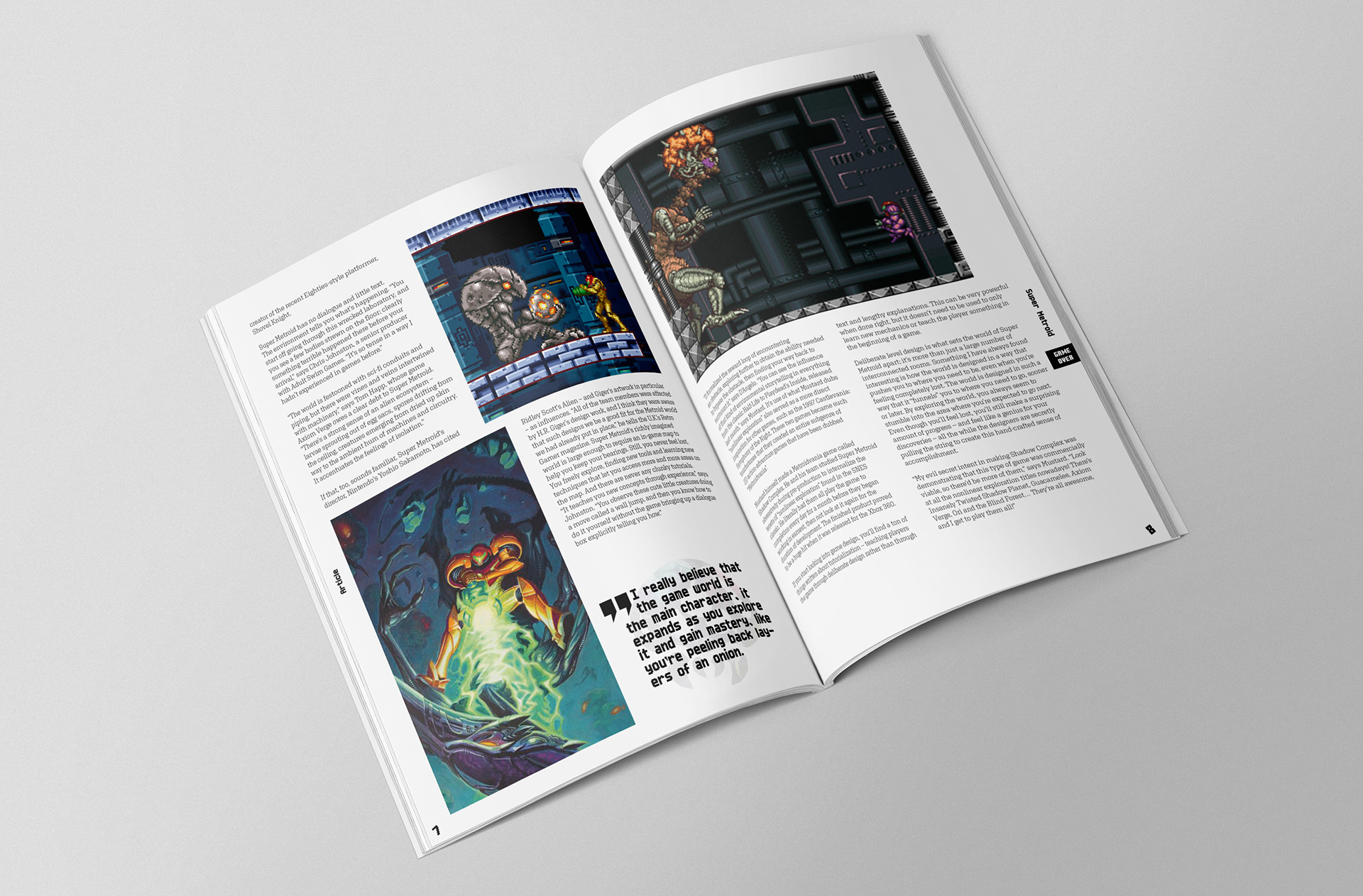This magazine project was a part of a university module that explored the idea of visual culture as an editorial piece. Our magazine topic choice was up to us as long as it fell into the category of visual culture. From there we were tasked to make a masthead, and begin thinking about the overall brand identity behind the magazine.
From this Emulator was created. Emulator is a magazine that proudly dives into the history and culture of old-school consoles, games and their characters and lore. A nostalgic look into the games that we grew up with
and intrinsically how they have grown up with us.
and intrinsically how they have grown up with us.
So why 'Emulator'? An Emulator, in a computing sense allows for old school games to be played on new
school system’s it is a magazine that proudly bridges the gap between the generation of today and the gamers of yesterday - Our magazine Emulator not only allows for people to reconnect with their childhood, it also allows for a new generation to take a look at the old-school that inspired the gaming world for years after. Nostalgic / retro gaming: The history and culture of older generation games and consoles that we deem as nostalgic to play.
school system’s it is a magazine that proudly bridges the gap between the generation of today and the gamers of yesterday - Our magazine Emulator not only allows for people to reconnect with their childhood, it also allows for a new generation to take a look at the old-school that inspired the gaming world for years after. Nostalgic / retro gaming: The history and culture of older generation games and consoles that we deem as nostalgic to play.
The masthead and tagline for the magazine turned out to be a defining turning point for the magazine as a whole.
I enjoyed the small little details and nods to gaming references that I could input, and this became a driving point for many of the decisions to come for the rest of the magazine. The nods to gaming culture would serve as an added element of experience for readers who will surely pickup up on them. 'Press enter to start' - the tagline I landed on, in itself acted as both a nod to gaming culture as well as a nice call-to-action in a way; welcoming
the reader to enter the magazine and start their adventure into the world of nostalgia.
Pulling ideas for the cover from gaming culture was a lot of fun, but due to variety it allowed, the process
ensured that I had to be decisive and follow a route that I believed was actually meaningful and worked as a series. Below are the various initial ideas that I created before settling on any idea. Many of these ideas show some kind of admiration and care for a gaming franchise or house elements of retro gaming culture that is to
be picked up on by the audience.
ensured that I had to be decisive and follow a route that I believed was actually meaningful and worked as a series. Below are the various initial ideas that I created before settling on any idea. Many of these ideas show some kind of admiration and care for a gaming franchise or house elements of retro gaming culture that is to
be picked up on by the audience.
Throughout the issues Emulator will incorporate info about games of multiple consoles per issue - no single focus but could include; character time-lines, pieces of lore, console facts, about franchises, looks into games in specific decades, ratings of games (maybe in terms of the top 10 games per decade since 1980), deep dives into actual games and the stories involved, articles that go into conceptual aspects of games (e.g. the meaning behind ‘Master Hands‘ in the ‘Super Smash bros’ franchise), info on individual game creators and the different games
they have been a part of, gamers who are renowned for being good at the game.
they have been a part of, gamers who are renowned for being good at the game.
This look into the visual culture of retro video games brings a wide range of people together - setting an
age range wouldn’t suit this magazine. The games in question would be ones that people grew up with during
that time or at a later stage if they were passed down to them. The audience is a huge driving factor behind
many of the decisions made for the magazine.
age range wouldn’t suit this magazine. The games in question would be ones that people grew up with during
that time or at a later stage if they were passed down to them. The audience is a huge driving factor behind
many of the decisions made for the magazine.
A lot of the design decisions or design elements within the magazine were influenced by games of the past. I really wanted the magazine to feel like it shows respects to classic games and consoles, and already as seen with the magazine name and tagline, we have placed these little nods to classic games throughout the magazine. An example of this seen within the magazine would be at the end of every article we have placed a small “Game Over“ sign to clearly signal when an article has ended.
Symbols are a mark used as a conventional representation of an object, function, process, or in the case of Emulator, a character or game. They stand for not just the thing they are depicting, but also bring with it, on an individual level, memories and genuine feeling also; a visual queue to reminisce about a cherished lived moment. Emulator makes good use of relevant icons that can be easily recognised from specific games, serving as fan service to many who have ever experienced said game.
Emulator takes pride in catering to its wide audience in many special ways, be-it a big symbol on the cover
that brings back memories from when they used to play video games, or the spine laid out like that of original PlayStation game cases. These little nods to video game culture is our way of establishing a mutual respect
and understanding to our readers. We are a part of the community too and are proud to showcase this.
that brings back memories from when they used to play video games, or the spine laid out like that of original PlayStation game cases. These little nods to video game culture is our way of establishing a mutual respect
and understanding to our readers. We are a part of the community too and are proud to showcase this.


The outcome was more than I had hoped for initially. Along the way I had the pleasure of adding more and more based on research and prior knowledge that I had on retro gaming in general. Most design decisions ended up being driven by some kind of retro gaming reference. From the front cover to the inside I am happy with creating a magazine that is dynamic in layout, makes use of imagery in interesting ways, and incorporates gaming research to appeal to and keep the audience engaged throughout.
